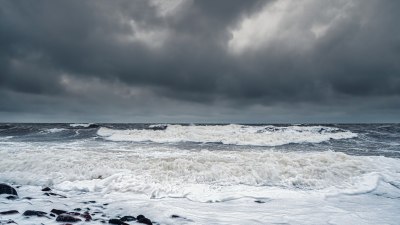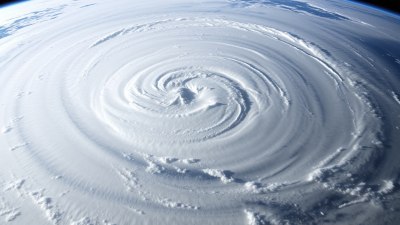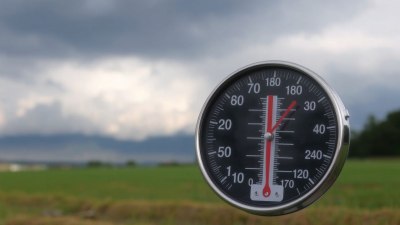What Causes Sudden Ocean Storms
Discover the key factors and phenomena behind sudden ocean storms and their impacts on marine life and coastal regions.

Image by stanislav71 on Freepik
Ocean storms, particularly sudden ones, can develop with little warning and have profound impacts on both the weather and life around coastal areas. Understanding the causes behind these storms is crucial for both meteorologists and those who live in or travel to coastal regions. In this article, we will explore the various meteorological and oceanographic phenomena that contribute to the formation of sudden ocean storms.
The Role of Atmospheric Conditions
One primary factor in the development of sudden ocean storms is the state of the atmosphere. Changes in atmospheric pressure, temperature, and humidity can create conditions ripe for storm development. For instance, when warm, moist air rises rapidly in a particular region, it can lead to the formation of thunderstorms. These thunderstorms can intensify into larger storm systems if they organize and propagate.
Influence of Ocean Temperature
Another significant influence on sudden ocean storms is the temperature of the ocean's surface water. Warm ocean waters provide the energy necessary for storms to develop. When water temperatures exceed 26 degrees Celsius (about 79 degrees Fahrenheit), the potential for storm activity increases dramatically. This is why many of the world’s destructive storms, such as hurricanes and typhoons, occur in tropical and subtropical regions where the sea surface temperatures are higher.
Weather Fronts and Low Pressure Systems
Weather fronts, which are boundaries between different air masses, can also play a critical role in the formation of ocean storms. When a cold front meets a warm, moist air mass over the ocean, it can trigger thunderstorms and powerful storms. Low-pressure systems that form over the ocean can intensify rapidly, drawing air and moisture in and leading to dangerous weather conditions.
The Role of Wind Shear
Wind shear, which refers to the change in speed and direction of winds at different altitudes, is another factor that can influence storm development. High wind shear can inhibit the development of storms by dispersing heat and moisture. Conversely, low wind shear allows storm systems to strengthen, as the rising warm air is not disrupted, enabling the storm to grow. Detecting wind shear conditions is vital in predicting the likelihood of sudden storm formation.
Seasonal Variations
The time of year can also significantly affect the likelihood of sudden ocean storms. In many parts of the world, certain seasons bring higher probabilities of intense storms. For example, the Atlantic hurricane season runs from June 1 to November 30, with most storms occurring from August to October when ocean temperatures peak. Understanding these seasonal trends is crucial for timely forecasting and preparedness.
Impact of Climate Change
Climate change is another significant factor influencing the frequency and intensity of sudden ocean storms. As global temperatures rise, so do ocean temperatures. Warmer ocean waters provide the energy for more intense storms and may lead to changes in storm patterns. Additionally, climate change can alter weather patterns, leading to increased variability and unpredictability in storm activity. Understanding these changes is essential for adaptation and risk management along coastlines.
Geographical Influences
The geographical location of ocean areas also plays a vital role in the types of storms that can develop. Regions with unique topographical features, such as the Caribbean Sea or the Gulf of Mexico, often experience more intense storms than open ocean areas due to the interaction between land and sea. Similarly, coastlines that feature bays and inlets can enhance storm effects due to the funneling of wind into these areas.
The Technology of Storm Prediction
Advances in technology have significantly improved our ability to predict sudden ocean storms. Meteorologists use satellites, radar, and computer models to track weather patterns and predict storm behavior. These technologies allow for real-time data collection and analysis, enabling faster and more accurate warnings. Understanding the causes of sudden storms is only part of the solution; developing effective prediction and warning systems is equally important in mitigating their impacts.
Preparation and Response
Communities in coastal areas must prepare for the possibility of sudden ocean storms. This preparation includes establishing communication and emergency response systems, ensuring that residents have access to timely information, and developing evacuation plans. Governments and organizations play a critical role in implementing these systems and ensuring they are regularly updated to reflect changing conditions.
In summary, sudden ocean storms are complex phenomena driven by a combination of meteorological, oceanographic, and climatic factors. Understanding these causes can help improve forecasting and preparation efforts, ultimately minimizing the risks associated with these powerful natural events. As climate change continues to evolve, our knowledge and readiness will be increasingly vital in facing the challenges presented by sudden ocean storms.











